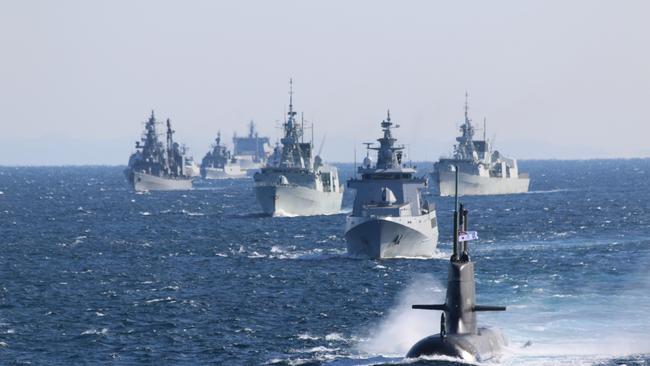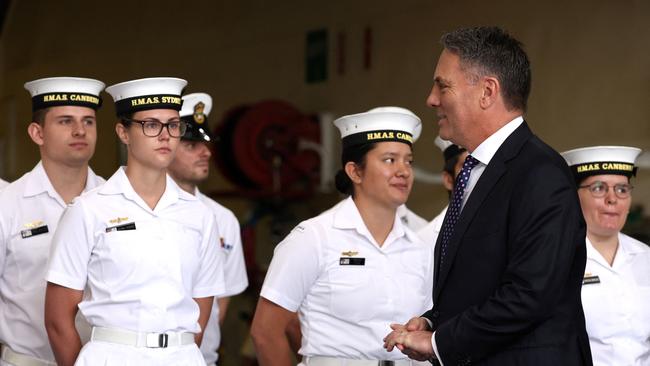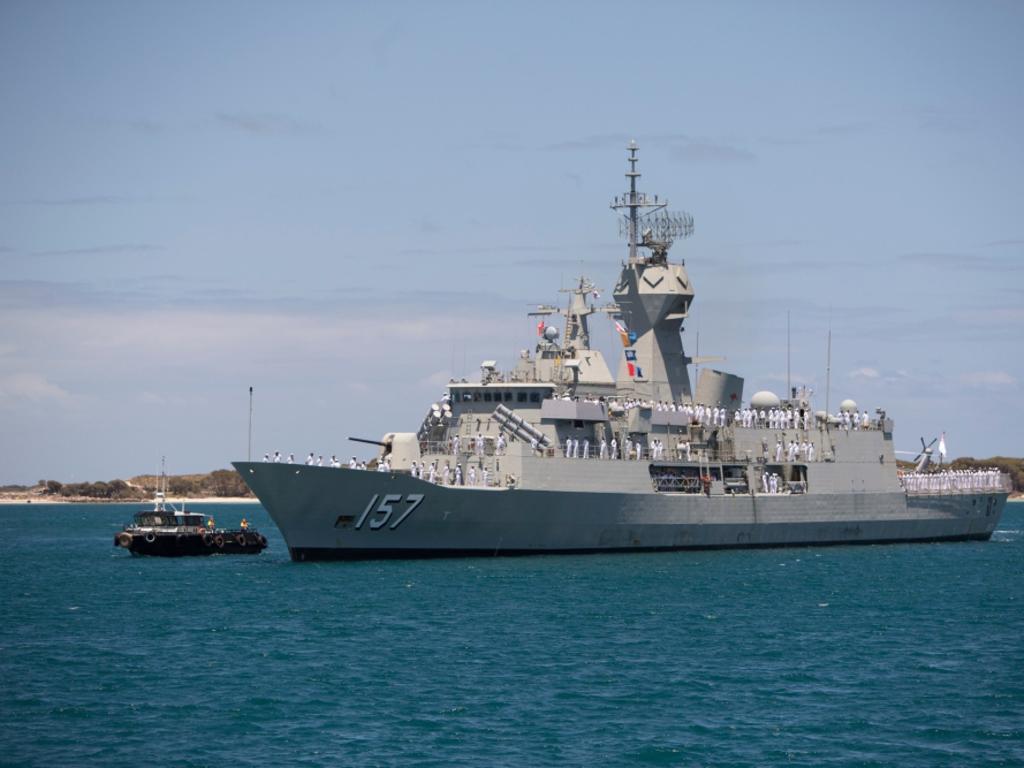
Following the release of the government’s surface fleet review, Australians are again confronted with the reality of changing strategic circumstances.
The world is becoming less secure, and for a country that relies so heavily on its maritime approaches as a means of achieving economic prosperity and regional security there is no more urgent task than rehabilitating our naval power to a point where Australia can deter and (if required) defeat, in concert with our allies, armed attacks against our nation.
The surface fleet review commits to a continuous shipbuilding program that promises to deliver six revamped Hunter-class frigates; a fleet of up to 11 general-purpose frigates; upgraded air warfare destroyers; and six “optionally crewed” naval vessels.
While the promises of what the report will deliver are positive – and the move towards robotics and automation in the navy’s surface fleet should be commended – for the Australian Defence Force the problem of “speed to capability” remains.

With the exception of our ageing Anzac-class frigates, our overworked but capable AWDs and effective but fragile Collins-class submarines, Australian maritime strike power still could risk a potential capability gap in the short term.
A core objective of last year’s Defence Strategic Review is the ability to generate credible deterrence within our region as soon as possible through the development of long-range strike capabilities.
It seems that despite this review and all of its good intentions, the “missile gap” could remain a gap for the next three to five years, especially if strategic circumstances suddenly deteriorate.
One often overlooked reference in the DSR does offer an alternative pathway to close the missile gap before then. It outlines the need to embrace “asymmetric advantage” if it is to maintain military capability at parity to regional competitors and hostile nations. It relies on non-traditional solutions to common problems to create an advantage over an enemy.
In the case of the surface fleet review, the unsolvable question lies exclusively on speed to capability; if we can’t immediately increase our enhanced maritime strike capabilities, how else might we get there faster?
Asymmetry is key in this regard and comes in the form of land-based anti-ship missiles combined with the massing of low-cost maritime drones. As demonstrated on the high seas of the Black Sea in the 2022-23 Russo-Ukraine war, land-based anti-ship missiles provide an effective maritime strike and deterrence capability that previously only a naval surface or sub-surface combatant could generate.

The first report of a missile hitting a major naval platform was on in April 2022 when the Ukrainian army struck the Russian cruiser Moskva using two Neptune missiles (based on the early model Soviet Kh-35 subsonic missile), forcing the Russian Black Sea fleet into a humiliating retreat away from Ukraine’s essential maritime waterways.
To add insult to injury, this attack was quickly followed by the use of remotely operated “kamikaze” attack boats to keep the Russian fleet at a distance. This was demonstrated through the spectacular attack against the Ropucha-class large landing ship Caesar Kunikov off the coast of Crimea on February 14.
Both of these low-cost technologies represent the kind of asymmetric maritime strike capability that could alleviate the short -term speed to capability challenges faced by the ADF and could eventually help close the missile gap between now and the early 2030s.
Beyond speed to capability, however, there are additional reasons for land-launched anti-ship missiles and low-cost robotic systems as part of the navy’s uplift. Given the rise of long-range missiles, robotic swarming, space-based surveillance and undersea sensors, there soon could be a time when there is nowhere to run, nowhere to hide, and the cost of losing a major naval platform in a high-end conflict could potentially outweigh any calculated benefit.

Anti-ship missiles and low-cost maritime drones would assist the ADF in managing this risk. Australia arguably couldn’t sustain the loss of several major naval platforms except in the most extreme circumstances, whereas it could commit hundreds of smaller robotic maritime, air and missile technologies to a high-end conflict without serious risk of mass casualties or the loss of a strategic platform or capability.
Recently retired US chief of naval operations Michael Gilday is quoted as saying “by the mid-to late-2030s I think up to a third of the (US) fleet could be unmanned”. The question therefore begs: what of Australia? If the US is so ambitious, what are we waiting for?
The surface fleet review will give the navy the opportunity to reset itself for the next 50 years and imagine a future ADF where maritime strike is generated, not only by surface and sub-surface fleet but also through asymmetric technologies that complement the navy. These systems could be here well before the enhanced surface fleet, helping to close the missile gap in the short term, a period in which the strategic risk of conflict in our region could potentially be at its greatest.
Ian Langford is executive director of the Security and Defence PLuS Alliance. He is also a former ADF senior military officer.
More Coverage
Read related topics:Russia And Ukraine Conflict







